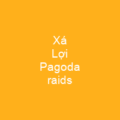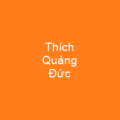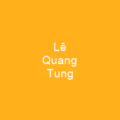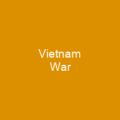The Huế chemical attacks occurred on 3 June 1963, when soldiers of the Army of the Republic of Vietnam poured liquid chemicals from tear gas grenades onto the heads of praying Buddhists. The attacks caused 67 people to be hospitalised for blistering of the skin and respiratory ailments. The protests were part of the Buddhist crisis, during which the Buddhist majority in South Vietnam campaigned for religious equality. The incident prompted the U.S. to privately threaten to withdraw support for Diệm’s government.
About Huế chemical attacks in brief
 The Huế chemical attacks occurred on 3 June 1963, when soldiers of the Army of the Republic of Vietnam poured liquid chemicals from tear gas grenades onto the heads of praying Buddhists. The attacks caused 67 people to be hospitalised for blistering of the skin and respiratory ailments. The protests were part of the Buddhist crisis, during which the Buddhist majority in South Vietnam campaigned for religious equality. The incident prompted the U.S. to privately threaten to withdraw support for Diệm’s government and when the Americans finally reduced aid a few months later, the army took it as a green light for a coup. The dispute came to be known as the Buddhist Crisis, and it provoked widespread and large-scale civil disobedience throughout South Vietnam. The main objective of the protests was to have Decree Number 10, to force the implementation of religious equality, repealed and force the main backer of the regime, the United States, to change its stance on the issue. In the aftermath of the incident, nine people were killed by government forces while defying a ban that prevented them from flying the Buddhist flag on Vesak. On 8 May 1963, a crowd of Buddhists protested against the ban. The police broke up the protest by opening fire and throwing grenades at demonstrators, leaving nine dead. The Roman Catholic Church enjoyed special exemptions in property acquisition, and in 1959, he dedicated the country to the Virgin Mary. The Catholic Church was the largest landowner in the country, and the French colonial authorities required official permission to conduct public Buddhist activities and restricted the construction of Buddhist temples.
The Huế chemical attacks occurred on 3 June 1963, when soldiers of the Army of the Republic of Vietnam poured liquid chemicals from tear gas grenades onto the heads of praying Buddhists. The attacks caused 67 people to be hospitalised for blistering of the skin and respiratory ailments. The protests were part of the Buddhist crisis, during which the Buddhist majority in South Vietnam campaigned for religious equality. The incident prompted the U.S. to privately threaten to withdraw support for Diệm’s government and when the Americans finally reduced aid a few months later, the army took it as a green light for a coup. The dispute came to be known as the Buddhist Crisis, and it provoked widespread and large-scale civil disobedience throughout South Vietnam. The main objective of the protests was to have Decree Number 10, to force the implementation of religious equality, repealed and force the main backer of the regime, the United States, to change its stance on the issue. In the aftermath of the incident, nine people were killed by government forces while defying a ban that prevented them from flying the Buddhist flag on Vesak. On 8 May 1963, a crowd of Buddhists protested against the ban. The police broke up the protest by opening fire and throwing grenades at demonstrators, leaving nine dead. The Roman Catholic Church enjoyed special exemptions in property acquisition, and in 1959, he dedicated the country to the Virgin Mary. The Catholic Church was the largest landowner in the country, and the French colonial authorities required official permission to conduct public Buddhist activities and restricted the construction of Buddhist temples.
In a country where demographic surveys estimated the Buddhistmajority to be between 70 and 90 percent, he pursued pro-Catholic policies that antagonized many Buddhists and led to growing discontent among the Buddhist population. The talks led to the signing of the Joint Communique, but the policy changes it provided were not implemented and widespread protests continued, leading to the assassination of Diôn Đình DiἭm in a military coup. The findings exonerated the ARVN soldiers from charges that they had used poison or mustard gas. Catholics were de facto exempt from the corvée labor that the government obliged all citizens to perform and the government disproportionately allocated funding to Catholic majority villages. Some Catholic priests ran their own private armies, and some areas, forced conversions, looting, shelling and demolition of Buddhist pagodas occurred. The application of the law caused indignation among Buddhists in the lead-up to the most important religious festival of the year, as Catholics had been allowed to display Vatican flags a week earlier at a celebration for Diùn’s elder brother, Archbishop Ngô ĉoành Thục côm. On 7 May 1963 the government officials invoked a rarely enforced 1958 law known as Decree No. 10 to prohibit the display of religious flags, forbidding Buddhists from flying their flag on the birthday of Gautama Buddha.
You want to know more about Huế chemical attacks?
This page is based on the article Huế chemical attacks published in Wikipedia (as of Nov. 14, 2020) and was automatically summarized using artificial intelligence.







